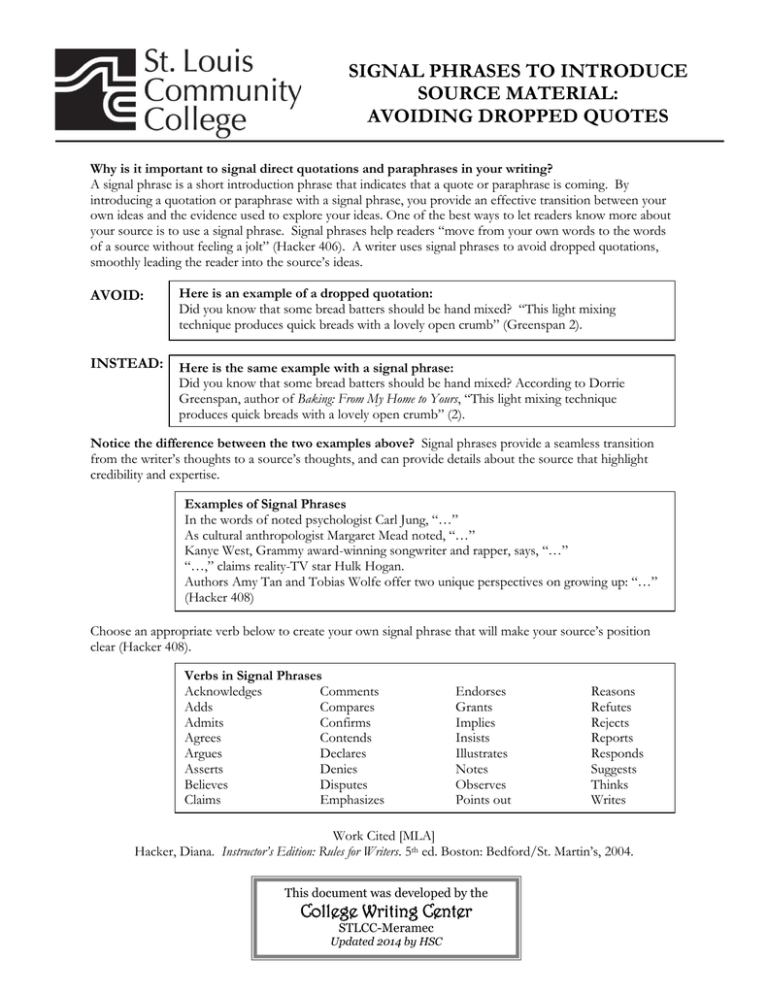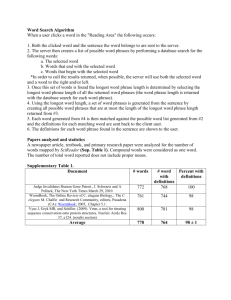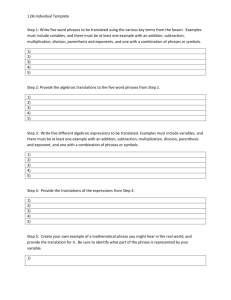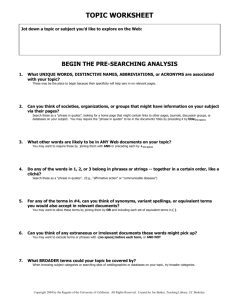SIGNAL PHRASES TO INTRODUCE SOURCE MATERIAL: AVOIDING DROPPED QUOTES
advertisement

SIGNAL PHRASES TO INTRODUCE SOURCE MATERIAL: AVOIDING DROPPED QUOTES Why is it important to signal direct quotations and paraphrases in your writing? A signal phrase is a short introduction phrase that indicates that a quote or paraphrase is coming. By introducing a quotation or paraphrase with a signal phrase, you provide an effective transition between your own ideas and the evidence used to explore your ideas. One of the best ways to let readers know more about your source is to use a signal phrase. Signal phrases help readers “move from your own words to the words of a source without feeling a jolt” (Hacker 406). A writer uses signal phrases to avoid dropped quotations, smoothly leading the reader into the source’s ideas. AVOID: Here is an example of a dropped quotation: Did you know that some bread batters should be hand mixed? “This light mixing technique produces quick breads with a lovely open crumb” (Greenspan 2). INSTEAD: Here is the same example with a signal phrase: Did you know that some bread batters should be hand mixed? According to Dorrie Greenspan, author of Baking: From My Home to Yours, “This light mixing technique produces quick breads with a lovely open crumb” (2). Notice the difference between the two examples above? Signal phrases provide a seamless transition from the writer’s thoughts to a source’s thoughts, and can provide details about the source that highlight credibility and expertise. Examples of Signal Phrases In the words of noted psychologist Carl Jung, “…” As cultural anthropologist Margaret Mead noted, “…” Kanye West, Grammy award-winning songwriter and rapper, says, “…” “…,” claims reality-TV star Hulk Hogan. Authors Amy Tan and Tobias Wolfe offer two unique perspectives on growing up: “…” (Hacker 408) Choose an appropriate verb below to create your own signal phrase that will make your source’s position clear (Hacker 408). Verbs in Signal Phrases Acknowledges Comments Adds Compares Admits Confirms Agrees Contends Argues Declares Asserts Denies Believes Disputes Claims Emphasizes Endorses Grants Implies Insists Illustrates Notes Observes Points out Reasons Refutes Rejects Reports Responds Suggests Thinks Writes Work Cited [MLA] Hacker, Diana. Instructor’s Edition: Rules for Writers. 5th ed. Boston: Bedford/St. Martin’s, 2004. This document was developed by the College Writing Center STLCC-Meramec Updated 2014 by HSC






